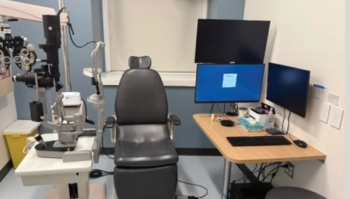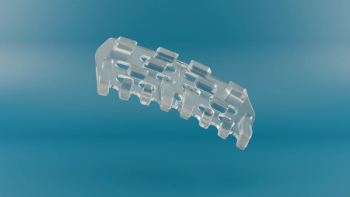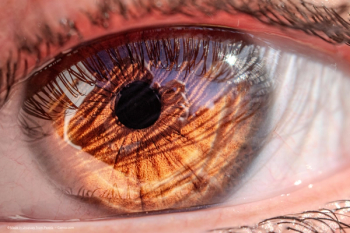
Compliance & cost concerns
What's the role for SLT?
In recent years the efficacy and affordability of glaucoma treatments has improved, and includes a range of medication options. Yet, it is a well-known fact that the costs of managing and treating glaucoma are still quite considerable.
The use of medication is generally considered a first line treatment to address glaucoma because of its perceived ease of use and effectiveness. As a result, SLT (selective laser trabeculoplasty) has been relegated to a niche therapy status, even though it is an equally effective and more cost-effective treatment (vide infra).
I have been using SLT in my practice for over eight years now, and consider it a versatile treatment for glaucoma and ocular hypertension. SLT has gained favour in recent years with glaucoma specialists, as it uses an Nd:YAG laser energy to selectively target pigmented trabecular meshwork cells with low threshold radiant exposures without producing collateral thermal damage to adjacent non-pigmented cells and structures.
Since SLT is a minimally invasive procedure, it is a very comfortable treatment from a patient's perspective. Unlike medication with eye drops, SLT has minimal side effects, or compliance issues, thereby giving the physician more control over the management.
In my practice, I always educate patients on all the treatment options available to treat their elevated intraocular pressure (IOP) levels. As the treatment is quick, lasting no longer than a slit lamp examination, SLT makes efficient use of the practitioner's time. It has a consistent safety profile, and greatly reduces the glaucoma patients' reliance on years of treatment with expensive medications.
My standard SLT procedure involves both eyes, and a 270–360 degrees treatment using the Ellex Tango laser (Haag-Streit UK Ltd, Harlow, Essex, UK) to deliver 120 spots, which has a stronger effect on IOP reduction. Most of my patients have achieved a good IOP level, with 95% experiencing an IOP reduction of 30% or more at 12 months, especially if SLT is performed first line. While SLT can be used as a first line or adjunctive treatment at any stage of the glaucoma, I have noticed it to be particularly effective as a first line treatment in the early stages of the disease. When used as second line, the success rate slightly drops to 80–85%.
At present, in the UK, SLT is a relatively new treatment, and reimbursements would be the same as for argon laser trabeculoplasty (ALT) (vide infra).
Another laser treatment, ALT, is equally effective and has similar characteristics in terms of reducing pressure, but ALT cannot be used as a repeat treatment, only as enhancement in a different area of the same eye, as it uses a much higher power that causes tissue damage. Also, the post-treatment visual recovery takes longer following ALT with much more post-operative inflammation and the need for anti-inflammatory drops for 1–2 weeks. With SLT, no repeat treatment is required for a long time, as the IOP results generally remains stable. ALT is a known treatment, having been in use since the mid 1990s, and costs are reimbursed by the Primary Care Trusts (PCT) in the UK.
Interestingly, a recent study by Cantor et al.1 demonstrated that laser trabeculoplasty techniques, including SLT, offered a potential cost saving of about $1,700 for patients who needed 2–4 medications over 5 years. The study calculated that the 5-year cumulative cost of laser trabeculoplasty was approximately $4,838, compared to the $6,571 of medications and $6,363 of filtration surgery.
This study suggests that using SLT earlier in the treatment paradigm for glaucoma led to increased efficacy and reduced costs. If medications are used as adjunctive treatment then SLT works very well in combination with beta-blockers, as they have an impact on the production of aqueous humour and SLT improves outflow.
I am in the process of conducting a study on whether first-line SLT is more cost effective than first-line glaucoma medication. A hundred patients have been enrolled so far as part of this study, currently in its second year; 50 patients in the SLT group and 50 patients in the medication group. The SLT outcomes with these patients must to be observed over a longer period of 5 years in order to gain a better perspective on the cost-effectiveness, efficacy and clinical viability of SLT treatment.
While the hidden costs, like the side-effect profile of medications, has yet to be explored, I am confident of the several advantages SLT has to offer over medications in relation to the complications, compliance and safety aspects.
When ready, the study could serve as a model for SLT treatment in countries across Europe. In terms of overall cost effectiveness, SLT has definitely proven to be more feasible. However, on the financial costs aspects, in the UK it is currently difficult to pin down a figure, as it all depends on the SLT tariffs that the PCT decides upon, and how it will compare against glaucoma medications in the future.
References
1. L.B. Cantor et al., Curr. Med. Res. Opin., 2008; 24(10):2905–18.
Newsletter
Get the essential updates shaping the future of pharma manufacturing and compliance—subscribe today to Pharmaceutical Technology and never miss a breakthrough.













































